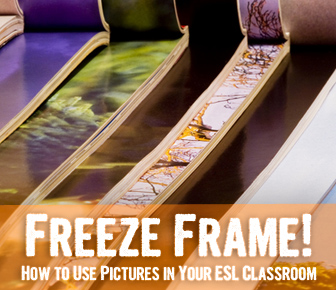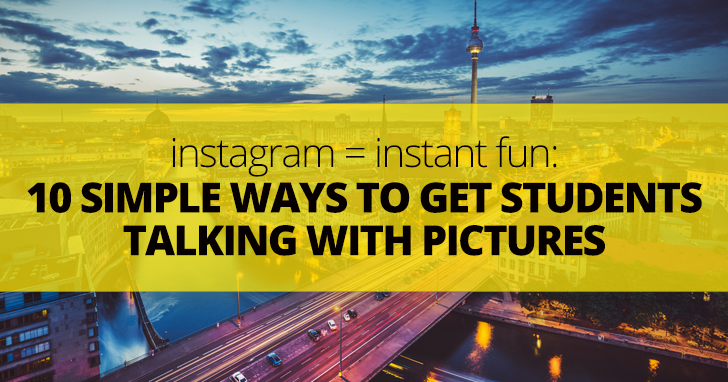Freeze Frame! How to Use Pictures in Your ESL Classroom


Pictures can be the starting point of all kinds of language activities from creative writing to dialogue development to practicing verb tenses. One of the easiest way to use pictures is to get the conversation started – using them for activities that get your students talking. It’s easy when you give them a picture for inspiration, and these activities do just that.
Pictures are all around you. You just have to be on the lookout for the ones that will work best with your students and your activities. Try looking for pictures in these places.
Now that you have your pictures, what are you going to do with them? Try one of these simple and fun activities with those great pictures you are ready to show.
Pair up your students and give each pair a photo of an interesting place. It might be a real place or a fantasy location that an artist dreamed up. You can also use photos and prints of classic pieces of art. Have one person imagine that they are in the picture. They should tell their partner what they see and why they are there. What are they going to do in that place? Let the other student ask questions for clarification or more information. Then have students switch roles and give them a new picture to work with.
Put your students in pairs sitting back to back, and give one person a simple picture. (This is where even rudimentary art skills come in handy.) That person must give his partner instructions on what to draw. The goal is for the drawing person to create a picture as close to the original as possible. Once students are done, let them look at each other’s pictures and see how close they are. Then switch roles and give them a new picture to work with.
Give two students two similar pictures to work with. It is up to you whether they are allowed to look at their partner’s picture. Then have the students talk about what is the same and what it different with the two pictures. If you like, have them write down ten statements comparing and contrasting the pictures.
You’ve probably played the classic game in your classroom, but you can change things up and play 21 Questions with pictures. Start with a picture with a lot of different elements. One person chooses an object in the picture and the rest of the class asks yes no questions to determine what object it is. They are limited to 21 questions, and if they can’t guess before question number 21 is asked, the person who chose the object is the winner of the round.
Complex pictures are good for vocabulary development, too. Challenge small groups of your students to find something pictured in the photo starting with each letter from A to Z. Give them one to five minutes to do it. You’ll be amazed at how much vocabulary your students know and how many more new words you can teach through this exercise.
Start with a picture that shows some action. Then challenge your students to say what came before this picture and/or what comes after it. Have them work in small groups to tell a complete story in three acts based on the picture.
This game is a good way to review parts of speech. Show your class one picture, and give them one minute to list as many nouns as they can find there (or adj. or verbs, etc.) At the end of one minute, have students share their lists and cross off any words anyone else in the class listed. The player with the longest list wins the round. Or score one point for each item on the list and play a total of three rounds with the highest total score winning the game.
Copy several pictures that show a sequence. A picture book is a good source, just black out the words on the page. Then challenge groups of students to put the pictures in the correct sequence. Want a real challenge? Give each member of the group one picture and don’t let students show their picture to the other members of their group.
Challenge your students’ memories in this picture activity. Have one student look at a picture for one minute then give the picture to a partner. That person then asks questions to see how much the first person can remember. Give students a new picture and have them switch roles.
Have your students each make a collage about a topic you are studying (family, sports, etc.). Give each person two to three minutes to share about their collage to the class.
You don’t have to stress yourself out gathering a different set of pictures for every activity (although you certainly could). I have found it useful to set aside a specific folder for pictures. I then look through my stash and pull out the ones that are particularly useful for each picture based activity I do.
Get started with your collection today and see just how many ways you can get your students talking with a little pictorial inspiration.